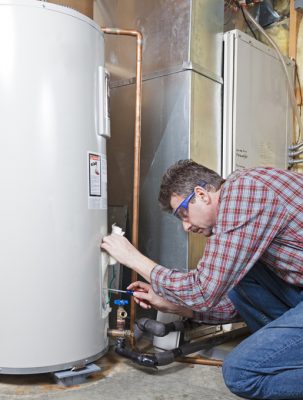Best Practices for Maintaining Your Home's Hot Water SystemMaking Sure Durability of Your Home's Hot Water System: Care Tips
Best Practices for Maintaining Your Home's Hot Water SystemMaking Sure Durability of Your Home's Hot Water System: Care Tips
Blog Article
Presented here below you might get some sensible facts in regards to How to Maintain Your Water Heater & Prolong its Life.

Warm water is crucial for everyday comfort, whether it's for a refreshing shower or washing dishes. To guarantee your hot water system runs efficiently and lasts longer, regular upkeep is vital. This article gives practical tips and insights on how to keep your home's hot water system to avoid disruptions and expensive repair services.
Introduction
Maintaining your home's warm water system could appear overwhelming, however with a few easy steps, you can guarantee it runs smoothly for years to come. This guide covers everything from comprehending your hot water system to DIY upkeep tips and knowing when to call in professional help.
Importance of Maintaining Your Hot Water System
Regular upkeep not just expands the life-span of your warm water system yet likewise guarantees it operates effectively. Overlooking maintenance can lead to decreased efficiency, greater power expenses, and also early failure of the system.
Signs Your Hot Water System Needs Upkeep
Knowing when your warm water system requires attention can protect against significant issues. Keep an eye out for indications such as inconsistent water temperature level, odd noises from the heating system, or rustic water.
Understanding Your Warm Water System
Before diving right into maintenance jobs, it's practical to understand the standard elements of your hot water system. Normally, this includes the hot water heater itself, pipes, anode poles, and temperature level controls.
Month-to-month Maintenance Tasks
Regular month-to-month checks can assist catch small concerns before they rise.
Flushing the Hot Water Heater
Flushing your hot water heater removes debris buildup, boosting efficiency and lengthening its life.
Checking and Replacing Anode Rods
Anode poles stop corrosion inside the container. Checking and replacing them when broken is important.
Examining and Changing Temperature Setups
Changing the temperature level settings ensures optimum performance and safety and security.
DIY Tips for Upkeep
You can carry out several upkeep tasks on your own to keep your warm water system in top problem.
Checking for Leakages
Routinely evaluate pipes and links for leaks, as these can bring about water damages and higher expenses.
Testing Pressure Alleviation Valves
Evaluating the stress relief valve guarantees it functions properly and prevents extreme stress buildup.
Shielding Pipes
Protecting warm water pipes lowers warmth loss and can save power.
When to Call a Professional
While DIY upkeep is advantageous, some concerns require expert expertise.
Complicated Problems Calling For Expert Aid
Examples consist of major leakages, electrical troubles, or if your water heater is continually underperforming.
Routine Specialist Maintenance Perks
Professional upkeep can include complete inspections, tune-ups, and making sure conformity with safety requirements.
Conclusion
Routine upkeep of your home's hot water system is necessary for performance, long life, and expense financial savings. By following these ideas and recognizing when to look for specialist help, you can make sure a dependable supply of warm water without unexpected interruptions.
How to Maintain an Instant Hot Water Heater
Before tinkering with your hot water heater, make sure that it’s not powered on. You also have to turn off the main circuit breaker and shut off the main gas line to prevent accidents. Also turn off the water valves connected to your unit to prevent water from flowing into and out of the appliance. 2. When you’re done, you have to detach the purge valves’ caps. These look like the letter “T” and are situated on either side of the water valves. Doing so will release any pressure that has accumulated inside the valves while at the same time avoid hot water from shooting out and burning your skin. 3. When the purge valves’ caps are removed, you have to connect your hosing lines to the valves. Your unit should have come with three hoses but if it didn’t, you can purchase these things from any hardware or home repair shops. You can also get them from retail stores that sell water heating systems. Read the user’s manual and follow it to complete this task properly. When the hosing lines are connected, open the purge port’s valves. 4. You should never use harsh chemical cleaners or solutions when cleaning your unit. Make use of white vinegar instead. It should be undiluted and you’ll probably use about 2 gallons. 5. Now flush your water heater. This task should probably take about 40 minutes. We can’t give you specific directions for this because the procedure is carried out depending on the type, model and brand of your heater. With that being said, refer to the user’s manual. 6. When you’re done draining the unit, you have to turn off the purge port valves again. Remove the hosing lines that you earlier installed on each of the water valves. Put the valve caps (purge port) back in their respective places and be very careful so as not to damage the rubber discs that are found inside these caps. 7. Now that everything’s back in place, check your user’s manual again to find out how to reactivate your water heating system. 8. Once it is working, turn one of your hot water faucets on just to let air pass through the heater’s water supply pipes. Leave the tap on until water flows smoothly out of it. https://www.orrplumbing.com/blog/2014/september/how-to-maintain-an-instant-hot-water-heater/

Hopefully you liked our article about What Kind of Maintenance Do Water Heaters Need?. Thanks so much for taking the time to read our post. Loved our write up? Please share it. Help another person check it out. We treasure reading our article about How to Maintain a Hot Water Heater in a Few Simple Steps.
Schedule Now! Report this page